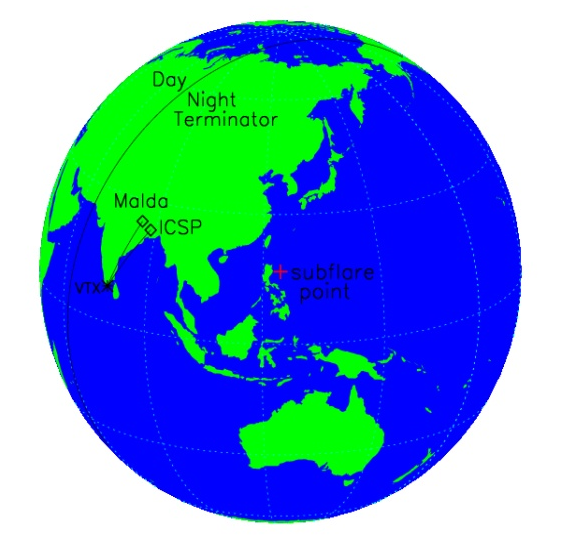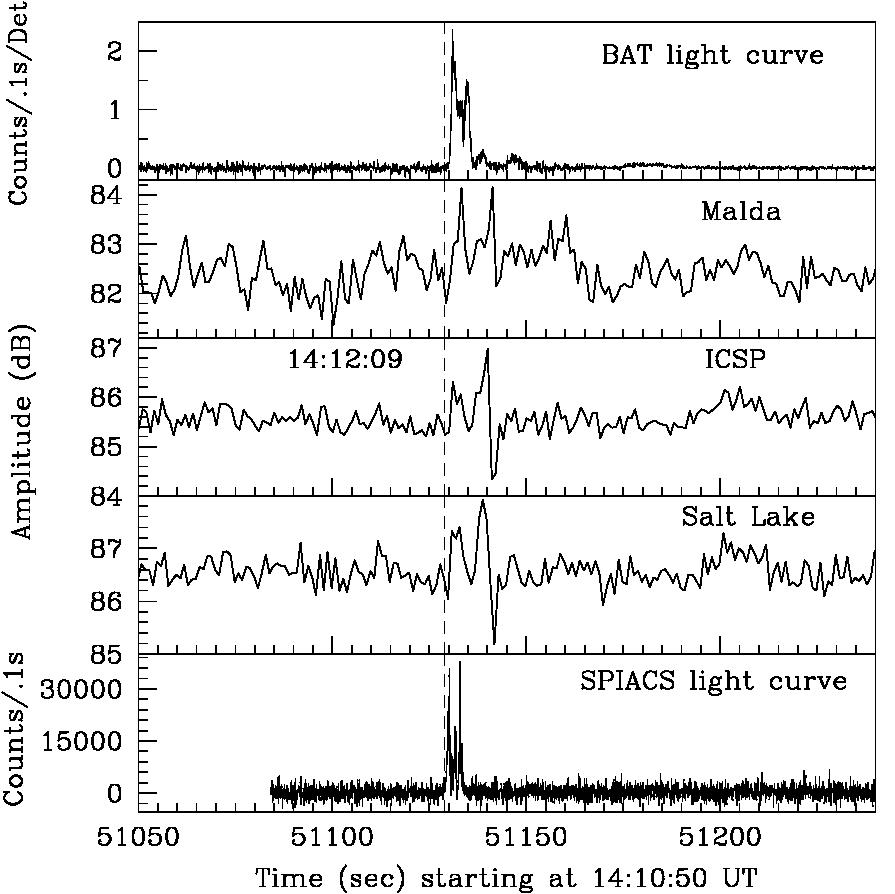The Earth's ionosphere can be used as a gigantic detector to monitor high energy astrophysical phenomena without interruption such as Earth occultation or detector saturation due to excessive count.
The high energy photon and particle radiation from astrophysical sources can affect life on Earth. The important effects are-
a) changes in the chemistry of the upper atmosphere.
b) effects of direct radiation on DNA damage and photosynthesis productivity.
In case of highly energetic events the detectors in the satellites may saturate resulting absence of spectrum/light curve. Using VLF data light curves/spectrum could be generated and spectral behaviour of such phenomena could be studied.

|

|
|
Illustration of a Gamma Ray Burst (courtesy: NASA) and the VLF monitoring paths for the Gamma Ray Burst GRB090424 (right). |
|

|

|
|
We have detected the Gamma Ray Burst GRB090424 using our VLF receivers at three stations (left). We also detected a Soft Gamma ray Repeater SGR J1550-5418 (right) where you can see the Fast Rise and Exponential Decay (FRED) type curves (dashed) due to the quick response of the lower ionosphere to the Gamma ray flares and subsequent slow decay due to the recombination of the ions (see Mondal et al., 2012 and Chakrabarti et al., 2010b). |
|